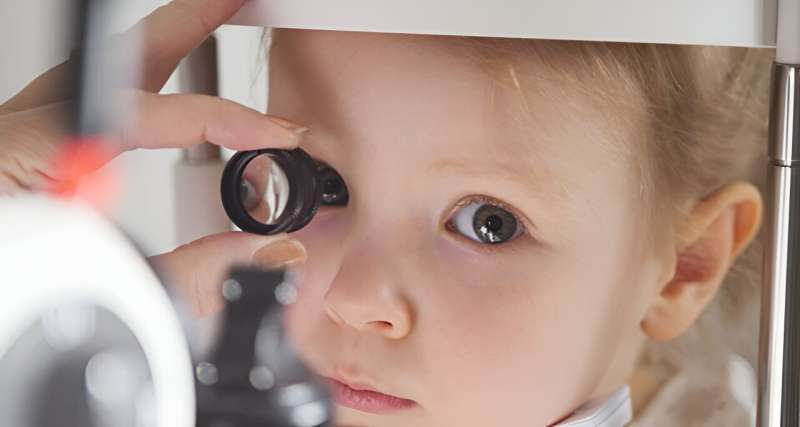This article has been reviewed according to Science X's editorial process and policies. Editors have highlighted the following attributes while ensuring the content's credibility:
fact-checked
proofread
Babies attend to clues of meaning as they take in complex visual world

Findings from a study have shown for the first time that when babies look at photos of unfamiliar everyday scenes, such as an office or a lab, they tend to fixate on the same regions where adults find meaning. This inclination to home in on what's interesting or meaningful grows more pronounced as babies age.
The findings, published in Infancy, provide a more nuanced understanding of visual development, which may lead to earlier detection of brain-based causes of vision problems, such as cerebral/cortical visual impairment.
"What's fascinating is that these infants had never seen a lab, and yet they were prioritizing visual information in the same way adults had, according to where they were likely to learn something important or interesting," said the study's lead investigator Lisa M. Oakes, Ph.D., professor of psychology at the University of California Davis Center for Mind and Brain.
"Our primary question was how the spatial distributions of meaning and physical salience, the largest or brightest objects, contributed to where infants looked," Oakes said.
For the study, Oakes used digital photographs with existing meaning maps developed by her colleague at UC Davis, John Henderson, Ph.D., professor of psychology. To produce the maps, 165 adults were each shown 40 photographs of complex, real-world indoor and outdoor scenes (leafy parks, office spaces, living rooms). However, instead of rating the scene as a whole, the adults rated small circular regions, or patches, of the scene.
Each adult rated 300 random scene patches extracted from the 40 photographs according to the meaning of each patch (how informative or recognizable it was). The ratings for each pixel in each scene was averaged, creating for each photograph a meaning map, which displayed as a heat map.
Oakes randomly presented the same photographs to 92 healthy, full-term infants between ages 4 and 12 months and measured fixation using an automatic eye tracker. None of the babies had a history of neurological or vision problems, and they were not at risk for having colorblindness based on family history. The final analysis included 21,053 fixations.
To be consistent with earlier studies, including the one in which the meaning maps were generated, all the babies' fixations were evaluated based on location, and not duration.
When we look at a photograph of an everyday scene, our attention naturally gravitates toward the middle. Oakes controlled for that bias. In addition, none of the images contained humans or faces, which previous research suggests draw attention in complex ways.
The data revealed that meaning (as defined by the adult meaning maps) had more of an impact on where the infants looked compared to physical salience.
The influence of meaning on the infants' gaze was more robust among the older babies compared with the younger ones. This is consistent with research showing that vision attention transitions from being controlled by salient factors (most colorful or biggest object in the scene) to being controlled by higher-level processes (most meaningful or informative regions of the scene).
"What is surprising is that we found this shift when using a very adult centric definition of meaning," Oakes said.
The findings in no way indicate that the infants understood the meaning of what they were looking at in the same way that adults had. Yet if anything, the influence of meaning on fixation will likely be even more robust when infants are shown photos of familiar scenes, such as a playground, Oakes said. "That's the next step for this research."
More information: Lisa M. Oakes et al, The role of local meaning in infants' fixations of natural scenes, Infancy (2024). DOI: 10.1111/infa.12582





















